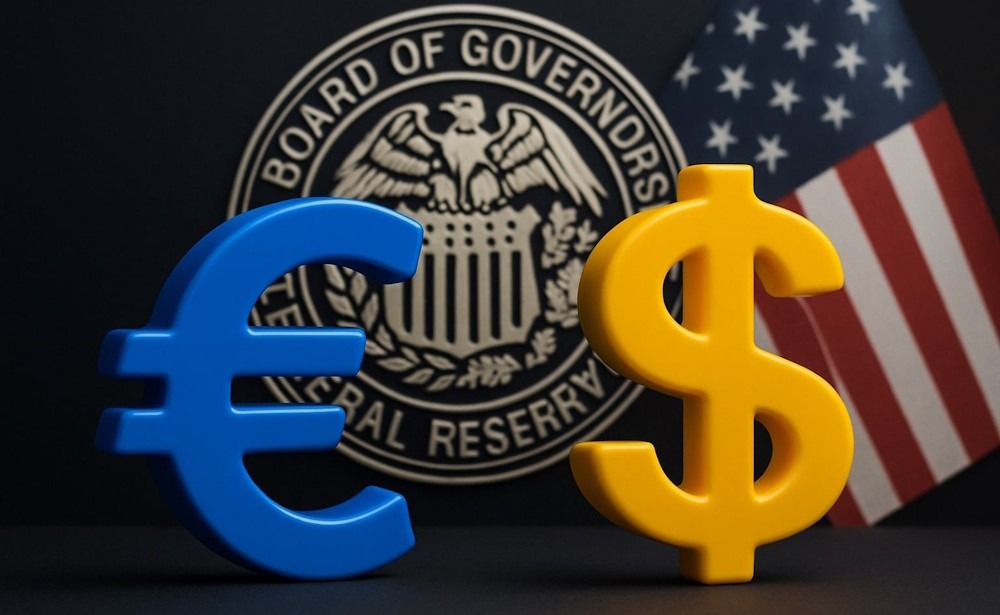The EUR/USD pair experiences a decline on Tuesday, influenced by the ongoing political turmoil in France and the impending US government shutdown. The Dollar, having previously depreciated, is now exhibiting a notable recovery, rising by 0.52% for the day, as indicated by the US Dollar Index. The currency pair is currently trading at 1.1654, reflecting a decline of 0.46%.
The Euro experiences a decline as the resignation of the French Prime Minister raises concerns about fiscal instability. The US Dollar experiences a rebound as market participants focus on the uncertainties surrounding a potential government shutdown and the rising inflation expectations indicated by the survey. Fed’s Kashkari cautions about the dangers of stagflation, whereas Miran points out sluggish growth and advocates for a proactive policy approach.
> The shared currency has declined below 1.17, influenced by France’s budget crisis and a resurgence of hawkish sentiment from the Fed : The circumstances in France have prevented the Euro from surpassing critical resistance levels and moving towards the annual high of 1.1918. The resignation of France’s Prime Minister Lecom jeopardizes the country’s 2026 fiscal budget, as political challenges have hindered France’s ability to stabilize its public finances. In the absence of a budget, the French assembly has the option to enact a special law permitting the government to carry over expenditures from 2025, thereby circumventing a shutdown similar to that experienced in the United States. Nonetheless, the legislation is deemed “transitory” since the assembly must sanction a budget. Currently, the US economic calendar includes the NY Fed Survey of Consumer Expectations, indicating that consumers anticipate increased prices over the next year. Recently, the RealClearMarkets/TIPP Economic Optimism Index experienced a decline in October.
Minneapolis Fed President Neel Kashkari expressed a moderately hawkish stance, indicating that it is premature to assess whether tariffs will contribute to persistent inflation. He noted that recent data indicate signs of stagflation, although he maintains a positive outlook regarding the labor market. Fed Governor Stephen Miran observed that economic growth in the first half of the year fell short of expectations and emphasized the importance of maintaining a forward-looking monetary policy, considering the delayed impacts of previous tightening measures. Data highlighted Germany’s Factory Orders, which, although showing improvement, contracted in August.
Latest FX Rate Trends : The robust performance of the US Dollar exerts pressure on the Euro
- Minneapolis Fed President Kashkari expressed skepticism regarding the impact of a few rate cuts on mortgage rates, cautioning that such reductions could potentially lead to a surge in high inflation for the economy.
- The New York Fed SCE indicated that the median inflation expectations for one year rose from 3.2% to 3.4%, while for a five-year period, it increased from 2.9% to 3%. Over a three-year horizon, it maintained a consistent rate of 3%.
- The same survey indicated that earnings growth expectations decreased by 0.1% to 2.4%.
- The RCB/TIPP Economic Optimism Index decreased from 48.7 in September to 48.3, reflecting a slight 0.4-point (0.8%) drop. This indicates the second month in a row that the index has stayed under the neutral 50 threshold, reflecting ongoing pessimism.
- Money markets suggest that the Fed is poised to reduce interest rates by 25 basis points (bps) during the forthcoming meeting on October 29. The probability is currently at 94%, as indicated by the Prime Market Terminal interest rate probability tool.
- European Central Bank President Christine Lagarde expressed her hope that France will deliver a budget promptly. She stated that the Euro ought to assume a more significant position on the global stage. She contended that the Euro Area functions as a “innocent bystander,” vulnerable to economic and financial disturbances emanating from Washington.
- In August, German Factory Orders experienced a decline of -0.8% MoM. While this is an improvement over July’s -2.7% contraction, it fell short of expectations for a 0.2% growth. On an annual basis, orders increased from -3.3% to 1.5% year-over-year for the same period.

